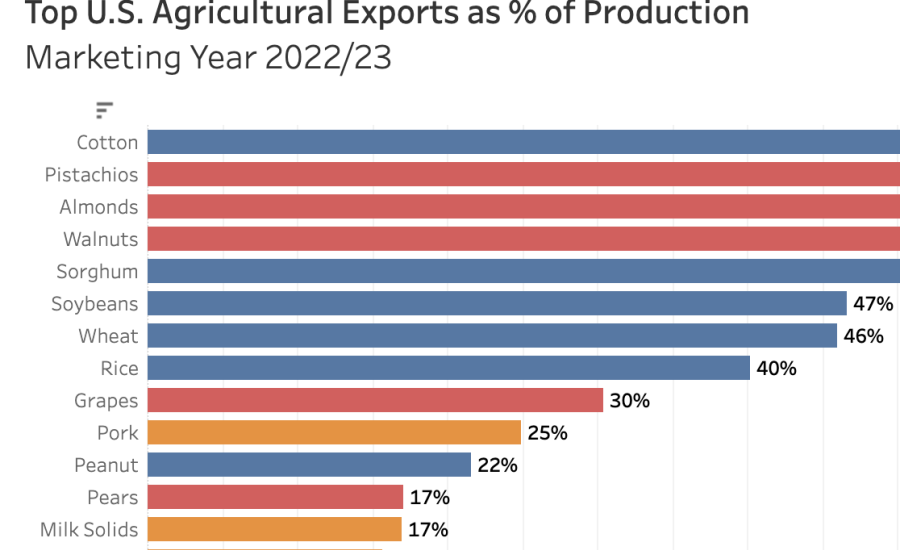Browse Data and Analysis
Filter
Search Data and Analysis
- 12 results found
- (-) Cotton
- (-) May 2024
- (-) November 2017
- Clear all
Ukraine established a simplified procedure for temporary registration of genetically engineered cotton varieties only.
U.S. agricultural exports are a critical source of farm income. The USDA Economic Research Service estimates that on average 23 percent of the output of nonmanufactured agricultural products were exported between 2013 and 2022.
Early spring precipitations in Andalucía came as a relief, refilling water reservoirs. However, this allowed for only a marginal recovery in area planted to cotton, as rains arrived when planting plans were already in place and largely oriented to less water-demanding crops such as winter grains or early spring-planted sunflower.
The 2023 U.S. Agricultural Export Yearbook provides a statistical summary of U.S. agricultural commodity exports to the world during the 2023 calendar year.
Monthly report on crop acreage, yield and production in major countries worldwide. Sources include reporting from FAS’s worldwide offices, official statistics of foreign governments....
This monthly report includes data on U.S. and global trade, production, consumption and stocks, as well as analysis of developments affecting world trade in cotton.
The global cotton industry is still readjusting to lower post-pandemic demand, and Uzbekistan wasn’t spared the effects of the market overhang. Uzbekistan's strong vertical integration and government support for the industry have helped drive both its resiliency and recovery.
The MY 2017/18 Turkish cotton planting estimate is up 18 percent to 470,000 hectares and production is up 23 percent to 870,000 MT (4 million bales).
On October 23, 2017, the State of Gujarat announced a bonus of about 3.5 cents per pound (Rs. 500 per 100 kg) be paid to farmers for seed cotton.
U.S. farm and food exports climbed eight percent in FY 2017, reaching the third-highest level on record.
Vietnam’s MY2016/2017 cotton imports reached 1.2 million tons (or 5.5 million bales), up 20 percent over MY2015/2016.
Mexican federal biotechnology regulators gain custody of genetically engineered (GE) cotton fields as a precautionary measure after finding events, not explicitly mentioned on permits, were granted...

